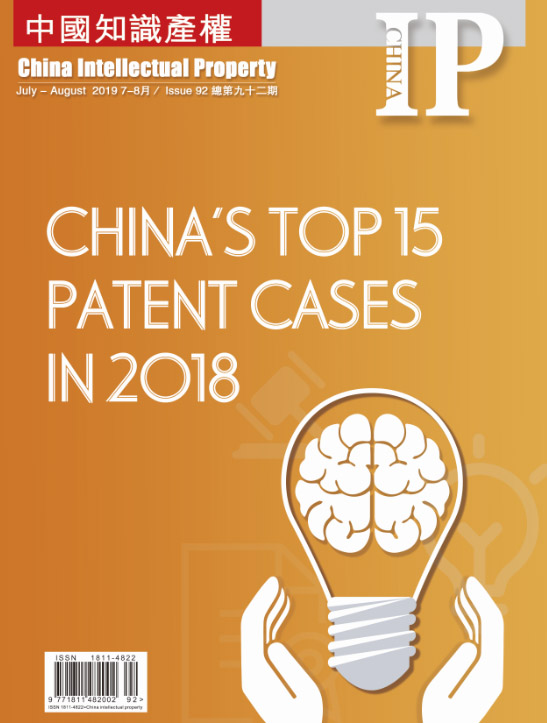
The present article will look firstly at opposition proceedings and will then move to some aspects of cancellation proceedings. After having read this article the reader should have sufficient background to understand the relevant guidelines which are at his disposal on the EUIPO website.
This is part of a series of articles with the aim to give the practitioners in China a rough idea of the functioning of the European IPR system with a focus on trademarks and designs. After having reviewed in the previous article the absolute grounds, the present one will look at the relative grounds for refusal.
Contrary to the Chinese system the relative grounds of refusal are not looked at by the examiner ex officio. Only in inter partes proceedings, such as opposition or cancellation actions, initiated thus by a third party, the corresponding examiners will decide on the claimed relative grounds of refusal. The present article will look firstly at opposition proceedings and will then move to some aspects of cancellation proceedings. After having read this article, the reader should have sufficient background to understand the relevant guidelines which are at his disposal on the EUIPO website.
Whereas the absolute grounds are essentially to be found in Article 7 EUTMR, for opposition proceedings and its grounds, Article 8 EUTMR is crucial. Oppositions can be introduced once the application did overcome the formality and examination phases and is published, precisely for opposition purposes. As already indicated in a previous article, the period for introducing an opposition ends three months from the publication of the application.
For oppositions it is essential to have an earlier right, on one hand, and have demonstrated to a certain extent that the consumers will be or most likely will be confused as to the origin of the goods and/or services when they are confronted with the younger and the earlier sign (not necessarily at the same moment in time).
Thus, Article 8 enumerates the earlier rights which enable the opponent to introduce an opposition. Obviously an earlier registered EUTM is such a right and practically of utmost importance: but an EUTM application can also be the basis of an opposition, provided that it proceeds afterwards to registration. In fact, the "earlier right" is measured by the application date. Just to refer once again to the particularity of the EUTM, specifically the dual system, a valid right for opposition can be also an earlier national trade mark, registered in one of the national/regional systems of the EU or an International Registration with effect in the EU or in a Member State.
Not only registered but also non-registered and non-applied for rights can be invoked for opposition purposes, in particular non-registered marks as long as they are well-known in a significant part of the EU. No register of wellknown marks exists though in the EU. The well-known character of the trade mark has to be evidenced by the opponent (more on this later on). Non-registered signs of the Member States used in the course of trade of more than mere local significance and which are entitled to do so in accordance with national law, such as trade names or company names, could also be a basis for opposition.
Whereas the oppositions on previously indicated rights can be only successful in the presence of double identity or likelihood of confusion well-known trademarks have a wider scope of protection. In that case the similarity of the goods and services in question would not be a condition for allowing the opposition.
Of practical importance for oppositions is the concept of likelihood of confusion and in the majority of cases with the invocation of earlier trademarks. Thus, it is expedient to dig a bit more how likelihood of confusion is interpreted by the opposition examiners (three examiners sitting on the board for deciding each case, one of them being the rapporteur).
The following elements influence the assessment of the examiner: The relevant public and its attention level, the similarity of the goods and services, the similarity of the marks and the distinctiveness of the earlier trade mark. The elements are normally examined in this order. On the basis of these elements the examiners will typically make an overall assessment whether the consumers may be confused as to the origin of the goods and services of the conflicting rights. From the outset the Chinese practitioner should be aware that the distinctiveness or the use of the younger trade mark has not any influence whatsoever to the conclusion with regard to likelihood of confusion. In fact, the younger mark has only a vocation to exist but is not even registered right at this moment in time.
Whereas the examiners may decide to begin with any of the elements he classically will first assess the relevant public and its attention level. In fact, the public and the relevant attention level may influence the assessment of the similarity of the goods and services and the marks. Consumers with a high attention level, for example due to the high cost of the goods (cars) or due to the high risk of services (investment or banking services) are likely to have a close look to the trade marks. On the contrary, low priced mass consumption goods, selected from the shelves, are generally bought with a low attention level of the consumers and therefore without a close look to the trademarks involved.
The examiners will then look at the similarity of the the goods and services of the conflicting rights. The criteria of assessment of the Chinese examiners and the EU examiners differ. According to Chinese practice goods and services in different classes and even the same class but in different subclasses are considered to be dissimilar. According to EU assessment criteria the Nice classification, which is also applied by EUIPO, has no decisive influence on the assessment of the similarity of the goods and services. It has administrative purposes only. In order to establish similarity of the goods and services and, if so, the corresponding degree of similarity the examiners will consider the following factors for each good or service or for each homogeneous group of them: Their nature, their intended purpose, their method of use, whether they are complementary or not, whether they are in competition or interchangeable, their distribution channels/points of sale, their relevant public and their usual origin. They will then proceed to an overall assessment of similarity taking into account all the factors. They may come to the conclusion that they are not similar. Then, in fact no likelihood of confusion can exist and if no earlier well known mark has been invoked, the opposition will be rejected without further assessment on the similarity of marks. The examiners, naturally, can also conclude that some goods and/or services are similar and others are not. In that case the examination continues only for the similar goods and/ or services and the opposition is, at this stage, already not successful for the part of dissimilar goods and/or services.
If the examiners conclude to a similarity of the goods and services they may also indicate the degree of similarity (high, medium, low, to a certain degree, remotely). They will then proceed to the comparison of the trade marks. If merely word marks are to be compared they will carry out the comparison by looking at the visual, aural and conceptual similarities and will define for each of them a degree of similarity. With regard to this comparison the Chinese practitioner should know that the similarity may be different according to the language territories of the EU. If the examiners determine for example a meaningful concept in one of the languages which would be highly allusive in the light of the goods and services the sign or that part of the sign would be considered as weak. Weak elements are less important in the comparison of signs as the consumers would not much pay attention to them. On the contrary, elements with no allusive conceptual content are considered as having a medium degree of distinctiveness. On that basis they will establish an overall degree of similarity between the conflicting rights.
More often than not the one, the other or both trademarks under comparison are figurative or complex marks, meaning that they include figurative and word elements or consist only of figurative features. Then the examiners would assess their dominant and secondary elements and their strongly and weakly distinctive ones. Dominant elements are those which are eyecatching, typically due to their size and/or position within the sign. Secondary elements are those at the end of the sign or those which are small in size with regard to the overall trade mark. The characteristics of strong and weak refer to the distinctiveness of the elements, meaning weak elements are those which are for example allusive or even descriptive of the goods and services. A coincidence in a distinctive element tend to increase the degree of similarity between the signs, whereas in the case of different distinctive features it has the effect to the contrary. A difference inan element with no or little distinctiveness is rather neutral and a coincidence in weakly distinctive features will not contribute much to the similarity of the signs. In fact consumers are not likely to pay attention to those elements or to recall them at a later moment in time.
Some examples of complex trademarks with strong and weak elements are reproduced below: The term "products" only refers to the goods in Class 3 and does not convey distinctiveness to the sign.

The relevant public is due to services with financial impact very attentive. It will attach little significance to the meaning of the words "capital" and "markets", which are descriptive of services in Class 36.

The expression 'NATURAL BRONZE' is descriptive of the purpose of the goods in Class 3 (tanning) and therefore weak.

The way of writing starting with a small letter and the orange background are only secondary and will not attract the attention of the consumers.

The dominant element of the mark applied for is undeniably BüRGER in upper case letters. It stands out, simply because of its position and the very large size of its lettering from all the other elements that make up the label.

The visual and aural comparison does not deviate much from the practice of the Chinese Trade Mark Office. Therefore no explanations are considered to be necessary for this part.
For the conceptual comparison the particularity of the EU with its many languages plays again a role. The examiners will have to look at meanings of the different elements and namely the meaning of word elements in the different languages. It has to be recalled that if a coinciding word has a meaning in one language territory, it leads to a conceptual similarity for that territory. It can also be that the conflicting signs have expressions in different languages with the same meaning. If the consumers or a significant part of them are able to understand the expressions in both languages this would lead also to conceptual similarity for these consumers. According to settled case law of the European Court of Justice it may well be that in some nonEnglish-speaking countries basic English words are understood. This is for example the case for The Netherlands, Germany and Scandinavian countries. It may therefore that two basic English terms are considered conceptually similar also in these countries.
After having compared the visual, aural and conceptual similarities and dissimilarities the examiners would typically determine the o v e r a l l d e g r e e o f s i m i l a r i t y between the signs. If they come to the conclusion that the signs are dissimilar no further analysis on likelihood of confusion would be necessary as one of its mandatory conditions is not met.
If however they conclude to any degree of similarity they would typically look at the degree of inherent distinctiveness of the earlier trade mark. If it is allusive to the goods and services it would have an inherent low degree of distinctiveness which tends to lower the risk of confusion. If the earlier sign is not banal, descriptive or allusive for the goods and services its inherent degree of distinctiveness would be determined as normal or medium. The opponent may claim an enhanced degree of distinctiveness of the earlier mark to increase the risk of confusion or the scope of protection of the earlier mark. Such claim must be supported by submitting evidence referring to the use of the trade mark on the market. Typically, the opponent files turnover figures supported by affidavit and invoices , certifications from chamber of commerce or other documents. If the examiners, after analysis of the documents, come to the conclusion that the earlier trade mark has been used intensively they may conclude to an enhanced degree of distinctiveness increasing the scope of protection of the earlier right. The examiners may also conclude, in the light of the evidence submitted, that the enhanced degree of distinctiveness has only be proven for part of the registered goods/services. In such case it will be taken into consideration accordingly. However any proof of the IP right owner on enhanced degree of distinctiveness for goods or services not on register would not be relevant for the outcome.
The next step of the decision will consider the overall assessment of likelihood of confusion. All previous parameters looked at so far will be considered. Thus, the examiners will revisit the attentiveness of the relevant public, the comparison of the goods and services, the comparison of the signs and the inherent or enhanced distinctiveness of the earlier trade mark and any other relevant element in order to assess whether the relevant consumers are likely to be confused as to the origin of the goods or services, when they are confronted with the trade marks at a different moment in time. They will then deliver the opposition decision. They may also come to the conclusion that the opposition is in part, meaning for some goods and services, allowed and for the remainder rejected. The aggrieved party has the possibility to appeal to the Boards of Appeal at EUIPO, a subject-matter which will be looked at in a different article. In case of a partial rejection/award both parties are able to appeal limited to the part of the aggrieved subject matter relevant to them.
The case of an opposition based on an earlier well-known registered or unregistered mark or a reputed trade mark is more complex and of less practical use for the Chinese practitioners and not in depth treated in this article. It is however a main issue for the foreign trade mark owners in China which is extensively discussed in a variety of available articles. Well-known trademarks must not be registered and still have an enlarged scope of protection. Obviously, a well-known trade mark in China is not sufficient for being recognised as well-known in the EU, being IP rights territorial rights. Also, the EU or Member States for that matter do not maintain a list of well-known trademarks. Three conditions have to be fulfilled in order to succeed on the grounds of a well-known trade mark (Art. 8(5) EUTMR): (i) the marks at issue must be identical or similar; (ii) the earlier mark cited in opposition must have a reputation; and (iii) there must be a risk that the use without due cause of the trade mark applied for would take unfair advantage of, or be detrimental to, the distinctive character or the repute of the earlier trade mark. The above conditions are cumulative and failure to satisfy even one of them is sufficient to render that provision inapplicable.
It is in each case up to the IP right owner to prove the well-known character of its trade mark. The establishment of reputation in the EU or at least in a significant part of it, is a high threshold for the IP right owner. It is true that the European Court of Justice does not require a concrete market share in order to recognise the well-known status of a trade mark. Rather, in the context of the assessment of whether an earlier trade mark has a reputation within the meaning of Article 8(5) EUTMR, account must be taken of all the facts relevant to the case, in particular the market share held by the trade mark, the intensity, geographical extent and duration of its use, and the amount spent by the undertaking in promoting it. Moreover, the reputation must refer to concrete goods/ services, the well-known character of a trade mark not being an abstract concept. The relevant date for the reputation must be the filing date of the contested application.
After reputation and the similarity of the signs there must be a risk that the use without due cause of the trade mark applied for would take unfair advantage of, or be detrimental to, the distinctive character or the repute of the earlier trade mark (Art. 8(5) EUTMR). As regards the concept of "taking unfair advantage of the distinctive character or the repute of the trade mark", also referred to as "parasitism" or "free-riding", that concept relates not to the detriment caused to the mark but to the advantage taken by the third party as a result of the use of an identical or similar sign. The existence of unfair advantage taken of the reputation of the earlier mark may be established, in particular, on the basis of logical deductions made from an analysis of the probabilities and by taking account of the normal practice in the relevant commercial sector as well as all the other circumstances of the case. The requirement of likelihood of confusion is therefore not a condition for the application of Art. 8(5) EUTMR.
Cancellation proceedings, as far as they are based on an earlier trade mark and the ground of likelihood of confusion are decided along the same lines as expressed in this article for opposition cases. However, cancellation proceedings may, contrary to opposition proceedings, also be based on absolute grounds (treated in a previous article), on non-use of the registered trade mark, or on bad faith. Due to its relative importance for the Chinese context the matter of bad faith will be treated in a specific article.
IP rights do not have a reason for existence on its own or in abstract. Its reason for the existence is business. It follows that IP rights have to be used on the market in order to continue to exist. If a trade mark is not used during a certain time period (3 years in China and 5 years in the EU) one of the following consequences may apply: It may become subject to cancellation proceedings due to non-use by any third party without the necessity of being IP right owner. Or, if the trade mark in question is the one an opposition is based upon, the applicant may ask the opponent to prove the use of this earlier mark. In the absence of proof of use of any of the goods/services for which it is registered, the opposition would be rejected without further assess any element of likelihood of confusion.
In both cases, either the IP right owner subject to a cancellation proceeding or the opponent faced with a proof of use request, needs to prove the genuine use of the trade mark with regard to all or at least part of the goods/services for which the corresponding trade mark is registered. Obviously, the threshold for such proof of use is lower as for the previously discussed reputation or claimed enhanced distinctiveness of the earlier mark through use. Again, the European Court of Justice does not require any concrete standard for the proof of use; it depends on the facts and circumstances of the case.
The proof of genuine use must concern indications of the place, time, extent and nature of use. Whereas either one or more of those items of evidence, considered alone, may not provide indications in respect of all of the mentioned criteria, all the relevant requirements may be satisfied when considering the evidence as a whole. Thus, the evidence as a whole has to demonstrate that each of the relevant requirements has been fulfilled. The requirement of genuine use does not seek to assess commercial success or to review the economic strategy of an undertaking, nor is it intended to restrict trade mark protection to the case where large-scale commercial use has been made of the marks. Genuine use does however not include mere token use for the sole purpose of preserving the rights conferred by the mark either.
In agreement with these principles established by the European Court of Justice the examiners would look at the commercial volume of the overall use, as well as of the length of the period during which the mark was used and the frequency of use. Typically submitted evidence would be invoices or advertisements. Affidavits from the interested party's employees are also often submitted. Generally, these affidavits have a lower probative value as such due to the fact that the party has a natural interest in the outcome of the case. Thus, affidavits, in order to be fully taken into account, must be backed up by other, independent evidence.
As it is the case in China opposition and cancellation cases may be mixed up or intertwined. A recent case decided by the cancellation division of EUIPO may serve as an example, case 14788 C of 11.1.2019. This decision as also all other decisions of EUIPO are published and easily accessible through a database on the EUIPO website. The case confronted an Ireland based company which decided to apply for an EU trade mark . McDonald's, the burger company, filed an opposition against the application on the grounds of a variety of earlier trademarks, among others BIG MAC. The opposition was upheld partially with decision on 20.1.2016 (Opposition No 2386582) for identical and similar goods. In a counterattack Supermac launched a cancellation request against the latter trade mark on the ground of non-use. Even though the popularity of the Big Mac burger is quite high, the evidence provided by McDonald's to prove the effective use were deemed as not enough and the BIG MAC trade mark was canceled. In support of the use of the trade mark McDonald's provided affidavits, b r o c h u r e s a n d p r i n t o u t s o f advertising posters, printouts from different websites and printout from Wikipedia.org. According to Cancellation Division the probative value of the evidence is reduced as it emanate from the IP owner itself and no independent evidence was provided. Moreover, the evidence does not prove the extent of use. As regards the extent of use it has to be considered the nature of the relevant goods or services and the characteristics of the market concerned, the territorial extent of use, its commercial volume, duration and frequency. Nothing of that kind was provided by McDonald's. Thus, even if the product is quite popular, the IP owner is not exonerated to provide evidence with special care. McDonald's has the possibility to introduce an appeal against the cancellation decision and present additional and complementary evidence. It is not allowed to present completely new evidence.
The present article puts forward the situation that an opposition or a cancellation proceeding is based on one earlier right and one ground. That must not and is often not the case. In the previously cited opposition case McDonald's raised 14 earlier rights, mostly trademarks, and three different grounds. Thus, Chinese practitioner should be aware that no limitation as to the earlier rights or grounds to be raised in inter partes proceedings exist. Whereas it can be that the opposition or cancellation division addresses all earlier rights or all grounds invoked, more often than not this is not the case. The assessment will normally start the analysis with the strongest earlier right and ground, the one which seems to be most likely to succeed from the perspective of the opponent or cancellation applicant. If the examiners come to the conclusion that the opposition or cancellation is successful on this right and ground, they would typically not enter into an analysis of the other grounds, for mere efficiency reasons. In fact, whatever the outcome of the analysis of the other rights and grounds may be, the outcome would not change. If, for example, the examiners come to the conclusion after analysing the first earlier right and ground that the opposition or cancellation proceeding is successful only for certain goods/services, the decision would further address other rights/grounds with regard to the remaining goods/ services.
But even if the analysis of the first and strongest earlier right/ground is not successful, the opposition and cancellation division is bound to look at the other rights and grounds. Again, for efficiency reasons it may come to the conclusion that if the the strongest right and ground is not successful, it may be clear, without further detailed analysis, that the weaker rights and grounds are even more so not successful. So, the parties are entitled to receive a decision but are not entitled to receive a detailed analysis of all their earlier rights and grounds invoked, if it proves not to be necessary for the end result.
Furthermore, for simplicity reasons the article indicates one opposition proceeding or one cancellation proceeding, so proceedings between two parties. However, it may well be that one application receives two or even more oppositions from different parties or trade mark owners. For the same reasons as mentioned before the opposition division would then start to write the decision with regard to the "strongest" opposition. If this opposition is fully successful the application is rejected. Then, there is no room to decide on the other opposition(s) against the same rejected application. Again, any further analysis would not change the outcome and can be regarded as pointless.
Finally, the Chinese practitioner should have some notions on cost issues with regard to opposition and cancellation proceedings. The overriding principle is that the losing party has to reimburse the winning party the representation costs and the administrative fees. The costs of an opposition proceeding is fixed at a maximum of EUR 300, the one of a cancellation proceeding at EUR 450. These maximum amounts are normally awarded to the fully succeeding party on top of the opposition and cancellation fee, paid by the corresponding party initiating the proceedings. Any cost decision concluding to reimbursement by the other party of the EUIPO is enforceable. If however the parties succeed on some and fail on other heads, it is normally decided that each party bears its own costs and fees. If the opposition or cancellation procedure is fully unsuccessful, the opponent or cancellation applicant has to bear its own costs, the fees and reimburse the costs of the winning party.
Disclaimer: The opinion expressed in this article is exclusively the personal view of the author and binds in no way the employer entities (EUIPO, EU Delegation to China).
|
Copyright © 2003-2018 China Intellectual Property Magazine,All rights Reserved . www.chinaipmagazine.com 京ICP备09051062号 |
|
|



